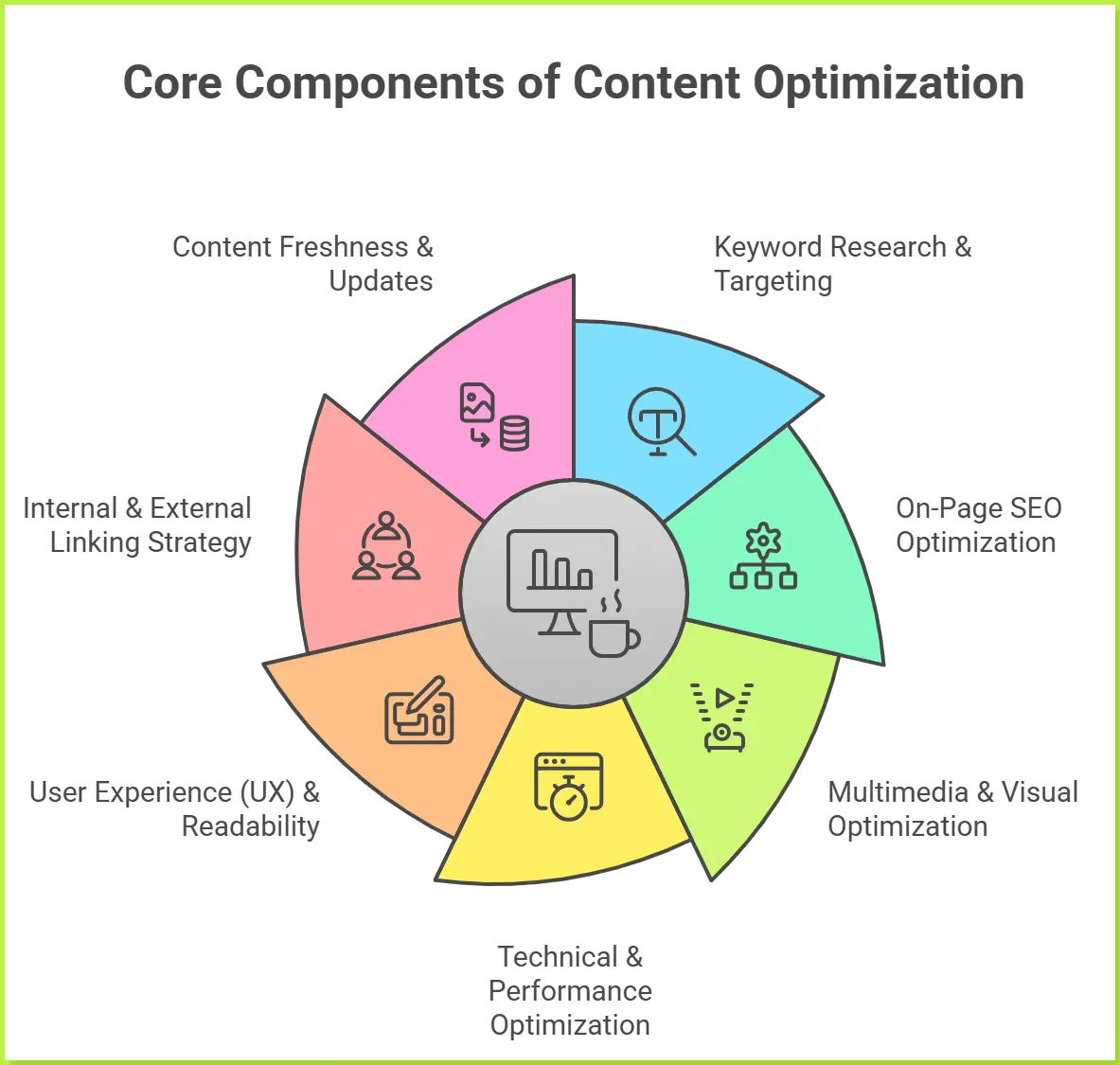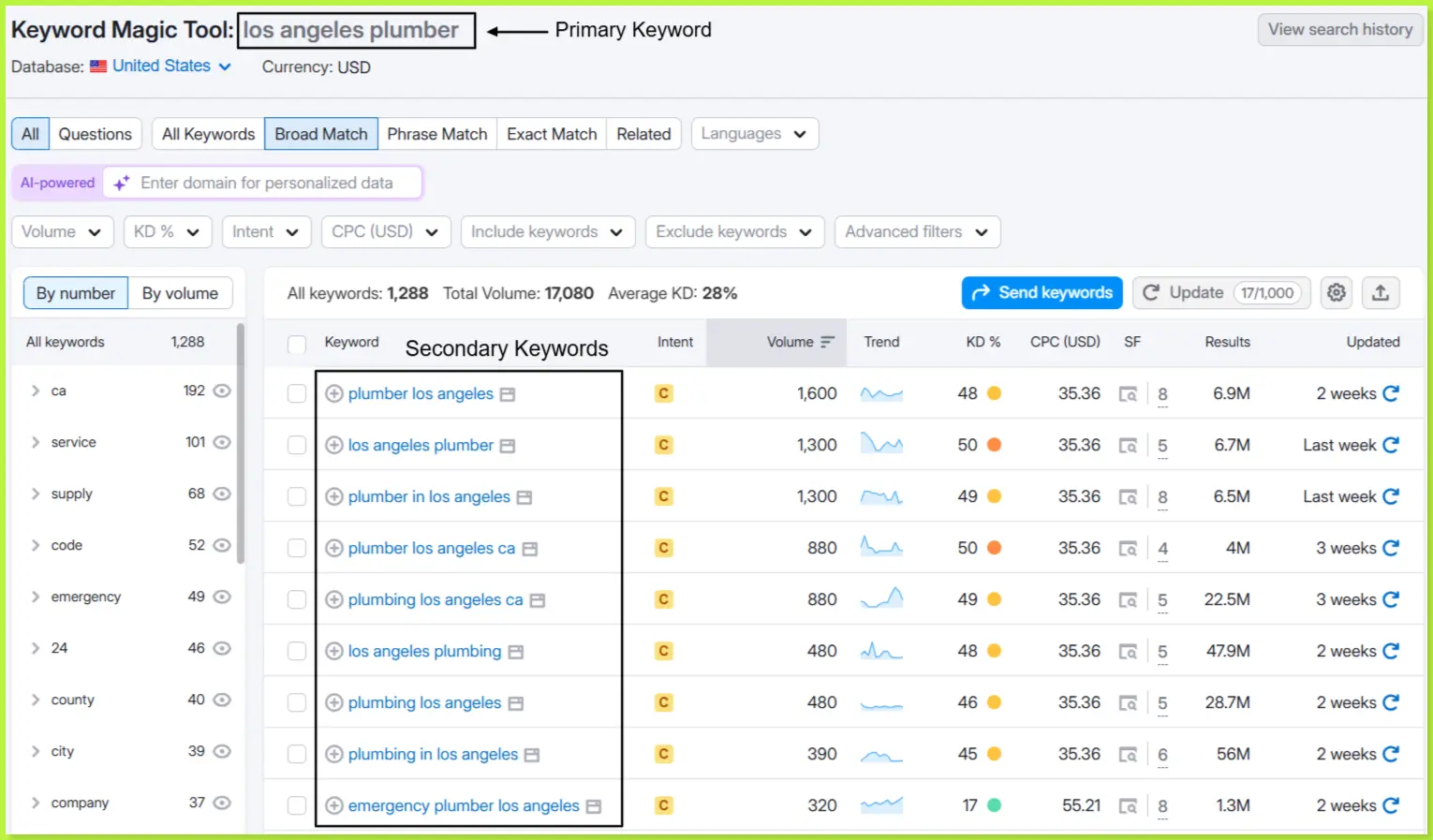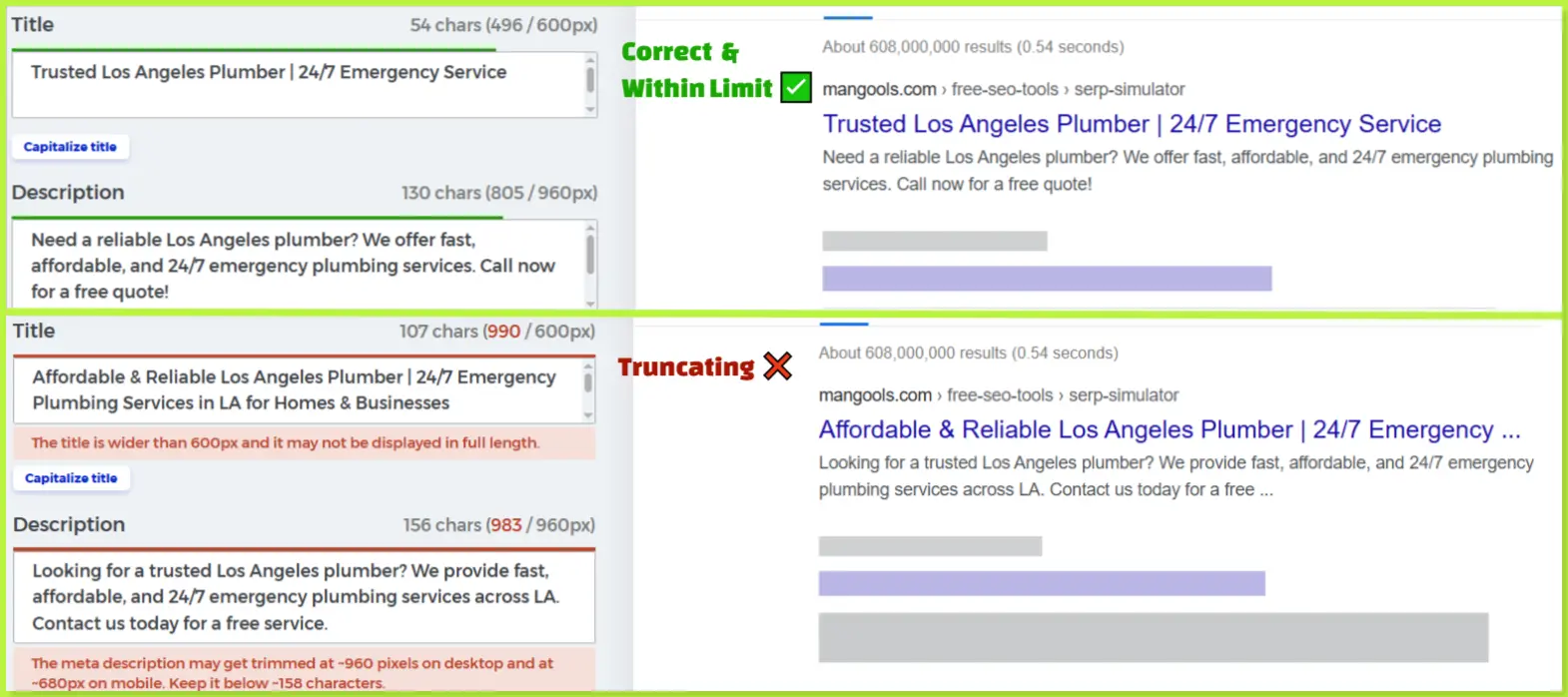Last Updated
03/10/2025
In today’s world, just creating content for a topic isn’t enough; it must be optimized to be found. It must have the meaning and the flow that a reader looks for. This is where content optimization in SEO comes into play. It involves refining your web content so that search engines can easily understand, index, and rank it evenly, while ensuring users find it relevant, helpful, and easy to engage with.
With over 16.4 billion searches per day on Google, competition for visibility is fierce. For your content to rank on search engines like Google or Bing, you need to check off several boxes: keyword relevance, structural clarity, semantic context, and technical performance.
But why does it matter? The easy answer is that SEO-optimized content helps you appear in the right searches, draw qualified traffic, and keep readers engaged. Whether you’re running a blog, an eCommerce store, or a service site, understanding content optimization can elevate your SEO strategy from basic to high-impact.
💡 Did you know?
75% of users never scroll past the first page of search results.
You better start optimizing today!
Content optimization simply is the process of improving the quality, structure, and technical elements of content so that it performs well in search engines and delivers value to users.
This doesn’t mean that stuffing keywords in your content or using AI like ChatGPT or Bard will help you in your race; it will mess things up even more!
Effective content optimization solutions work like grooming existing content on the web. They help users gain deeper insights into what they are searching for. The good thing is, content optimization for search engines works for everyone. Whether you run a service-based business, an e-commerce store, or write blogs, it fits all. All rivers run to the sea, just like all quality pages eventually find their way to Google
Content optimization in SEO involves improving your website content to rank higher, attract organic traffic, and enhance user engagement. Here are the core components of effective content optimization you need to implement for better search visibility:

Identify primary, secondary, and long-tail keywords aligned with search intent, and map them to relevant pages to avoid cannibalization.
Optimize titles, meta descriptions, headings, and keywords naturally while maintaining logical internal and external linking.
Use images, videos, and infographics with descriptive alt text, compressed sizes, and engaging visual context.
Ensure fast loading speed, mobile responsiveness, proper indexing, and apply schema markup for better search visibility.
Maintain a clean layout, easy navigation, readable fonts, and clear CTAs to enhance user engagement and conversions.
Connect relevant internal pages and credible external sources while avoiding broken or excessive redirecting links.
Regularly update older content with new data, keywords, and links to maintain search relevance and ranking.
In a world where over 7.5 million blog posts are published daily, approximately 409 million people view over 20 billion pages monthly on WordPress alone (according to OptinMonster) .
Standing out in search engines takes more than just publishing content. Understanding the content optimization definition is key; it’s the process that ensures your efforts don’t go unseen.
When content is optimized, it ranks higher in search engine results pages (SERPs), attracts more qualified visitors, and keeps them engaged. If your content isn’t optimized, you’re likely missing out on traffic that could have come organically, without needing to pay for ads!
This aligns with the broader role SEO plays in business growth. For small businesses, especially, understanding why SEO is important helps put content optimization into perspective.
Optimizing your content for search engines is a multi-layered process that balances technical structure with user-focused language and design. When done right, it doesn’t just improve rankings, it delivers better engagement, increased dwell time, and more conversions.
This content optimization guide will break it down into five foundational pillars, each of which plays a critical role in how your content performs in search engines and how effectively it serves the needs of your readers. The process is simple, but still, people complicate it and fail to achieve the desired results.
At the heart of every successful SEO strategy lies comprehensive keyword research. This isn’t about stuffing them randomly into your content; It won’t help you anyhow. The true keyword research is about deeply understanding what your audience is searching for and delivering content that precisely addresses those needs.
To optimize content for SEO, start by identifying a primary keyword, the central topic of your page, and several secondary keywords that support and contextualize that topic.
For example, take a look at this screenshot from SEMrush, let’s say our main keyword is “Los Angeles plumber.”
Now, notice the related keyword variations right below it. These are what we call secondary keywords. You’ll see keywords like: “plumbing in los angeles”, “plumber los angeles ca” or, “emergency plumber los angeles” why
Here’s a small tip: Take time when choosing an SEO agency, look beyond promises, and focus on proven results, tools, and communication.

Once your keywords are defined, it is never advised to rush and stuff them wherever you like in the content. Repetitive words and flow are what search engines hate the most. Instead, integrate them naturally throughout the page in:
Avoid awkward phrasing just to force a keyword. Search engines today are smart enough to understand variations and context. What matters most is satisfying the user’s intent behind the query.
While keyword targeting gets users to your page, On-Page SEO keeps them there and tells search engines exactly what your content is about. On-page optimization refers to the way your content is structured, formatted, and enriched to improve both crawlability and user experience.
A well-optimized page is not only readable by humans but also easy to interpret by search engine crawlers. This includes:

One often-overlooked element is content scannability. Most readers scan pages before committing to reading in-depth. Use bolding, bullet points, short paragraphs, and visual cues to make content easier to digest.
People might think Metadata is not relevant, and most people take it for granted; however, Metadata might be invisible on the page, but it plays a huge role in how your content is represented in search engine results.
Your meta description serves as the ad copy for your page. Even though it doesn’t directly influence rankings, it affects CTR, which is a strong user signal.
Structured data, or schema markup, adds context to your content. This helps search engines display rich snippets, such as FAQ dropdowns, ratings, and event data.
Common schema types for content:
Proper internal linking enhances both SEO and user engagement. When done right, it distributes link equity (ranking power) across your website and helps. Remember this: Google does understand content relationships!
Let’s consider an example:
You’re writing about “the best sushi dining experience in San Francisco.” You might link internally to related guides or pages like:
Use descriptive anchor text, not vague phrases like “click here.” This helps users know exactly what to expect and gives Google clearer context about the linked page. As for URL structure, keep it:
Bad URL: https://example.com/page123?id=8754
Good URL: https://sushilovers.com/signature-sushi-rolls
Optimizing for these simple changes enhances trust, improves UX, and helps you earn more clicks.
Visual content isn’t just decorative, it’s strategic. Studies show that articles that include images attract 94% more views than those without visuals. Our brains process visuals 60,000 times faster than text. That’s why a single image can explain what paragraphs can’t.
Imagine browsing a luxury watch website. You’re looking to buy a Rolex. The page offers detailed specs, pricing, and even guarantees. But there are no product images.
Would you trust it?
Of course not. Without visuals, the page feels empty, unconvincing, and possibly fake.
Well-placed, optimized media can:
But how can you get the most out of your media? Here are some key tips:

While keywords remain a vital part, modern content optimization in SEO goes far beyond inserting them into paragraphs and headers. Search engines have evolved to evaluate content based on context, quality, trust, user intent, and experience signals.
To truly optimize content today, it’s not just what people search; you need to understand how search engines thinks, how it processes your page, and what you can do to achieve it so that you can get both visibility and trustworthiness.
Search engines are no longer just matching keywords; they’re matching intent. If your content doesn’t align with what the searcher wants to accomplish, it won’t rank, no matter how well-optimized it may seem on the surface.
There are generally four types of search intent:
| Intent Type | Example Query | Best Content Type |
| Informational | “How to optimize content for SEO” | In-depth blog post or tutorial |
| Navigational | “Ahrefs login” | Branded landing page or login page |
| Transactional | “Buy SEO tools” | Product or comparison pages |
| Commercial | “Best SEO software 2025” | Review article or buyer’s guide |
Why it matters:
If someone searches “best content optimization tools,” a general blog about SEO basics will likely miss the mark. But a comparison guide with tool recommendations, pricing, pros, and cons? That’s aligned with commercial intent, and it’s far more likely to rank.
So when creating content, always ask:
When your page nails the user’s purpose, Google notices and rewards it.
Introduced in December 2022, Google’s Search Quality Evaluator Guidelines, E-E-A-T, is a framework used to assess how trustworthy and valuable your content is. Just as the name defines it. If your content is targeting a search like “Best roofing type in Los Angeles,” it must strongly align with E-E-A-T principles to rank well:
In YMYL (Your Money or Your Life) niches like finance, health, or legal, E-E-A-T is critical. But even in general topics, it’s now a competitive advantage.
DON’T forget about a page after you publish it! It’s still live on the web, and things can change quickly once it’s out there! Search engines prioritize up-to-date information, especially on fast-evolving topics like SEO, tech, and news. If your content is outdated, even if it once ranked well, it may get pushed down by fresher, more relevant pieces.
Make it a habit to audit existing content every 2–4 months. Update pages that are still getting traffic or insights but are slipping in rankings, or enhance thin posts with more depth, visuals, and new keyword targeting.
Even after you’ve nailed keyword research and implemented on-page SEO, it’s the small, strategic enhancements that elevate your content from good to great. These are the changes that boost rankings, improve engagement metrics, and build lasting authority in your niche.
Below are four essential, deeply impactful tips to ensure your content optimization strategy doesn’t just help your content rank, but also convert, retain, and earn trust.
This is the most important, most overlooked principle of content optimization. Adding value means creating content that serves a real purpose for the reader. It educates, solves problems, clarifies confusion, or helps the user make better decisions.
It’s not enough to echo what’s already ranking on page one; you need to expand, enhance, and evolve the conversation. Google is very good at detecting thin or redundant content that exists solely to chase rankings. Google asks to write for humans, not for their crawl bots.
To write content that adds value, start by researching what users are looking for, not just the keywords they type, but the intent behind those queries. Are they trying to learn something? Buy something? Compare two tools or products? Once you understand this, build your content around fulfilling that intent better than anyone else.
For example, if someone searches “home remodeling in Orange County,” they’re not looking for a generic list of services. They want real-world inspiration, local expertise, before-and-after examples, and practical advice tailored to the region. They’re seeking depth, so give it to them.
Once you understand this, build your content around fulfilling that intent better than anyone else, as Google recommends in their guide to helpful content.
Keyword stuffing used to be a legitimate (if lazy) SEO tactic in the early 2000s. But today, Google’s algorithms, especially BERT and Helpful Content updates, are designed to identify and demote content that overuses keywords unnaturally. If your content is awkward, forced, or repetitive because you’re trying to use a keyword every third sentence, you’re doing more harm than good.
Here’s what keyword stuffing looks like:
Our SEO content optimization services help you optimize content for search engines so your content optimization strategy is optimized.
And here’s our optimized version:
Our SEO services are designed to improve your content’s visibility in search results by focusing on strategy, structure, and user relevance.
This kind of black hat SEO tactic is dead nowadays; it’s widely referred to as spamdexing. Instead of fixating on how often a keyword appears, focus on topic relevance. This means using related terms, natural language, and topic clusters to create a well-rounded page. Sprinkle the terms naturally throughout the page, but only when they make sense.
Modern SEO is about understanding language the way humans do, and that’s exactly how Google’s natural language processing works. If your writing feels robotic, search engines will assume it was created for bots, not people. Worse, your readers will sense it too and leave the page, resulting in higher bounce rates and lower engagement metrics.
Even well-optimized, information-rich content can underperform if it’s hard to read. That’s why creating SEO optimized content with strong readability is essential, as it directly impacts user signals like time on page, bounce rate, and scroll depth, all of which affect SEO.
Online readers scan rather than read word-for-word, looking for headers, bullet points, and visual breaks. Keep paragraphs short, use clear subheadings, and break up text with visuals or interactive elements.
Ensure at least 16px font size, high-contrast colors, and adequate spacing. Block quotes, images, and other media can boost engagement. When content is easy to scan and understand, users stay longer, interact more, and are more likely to take action, improving SEO performance.
In 2025, mobile optimization is non-negotiable. Google now uses mobile-first indexing, which means it evaluates the mobile version of your content first when determining rankings. If your site is difficult to navigate on a phone, loads slowly, or breaks on smaller screens, your rankings will suffer, no matter how good your content is.
First, make sure your site uses responsive design. This ensures your layout, text, and visuals automatically adapt to different screen sizes. Avoid features like fixed-width tables, large background videos, or full-screen popups that may hinder usability on mobile.
Next, address page speed. Today’s users expect pages to load in under 2–3 seconds. Every additional second causes noticeable drops in user satisfaction and conversion rates. One of the best tools for helping in optimizing your page speed is either Google’s PSI or GTMetrix.
To optimize service pages for SEO, start by targeting specific keywords that match user intent. Use clear headings, engaging copy, and add location-based terms if relevant. Strengthen it further with internal links, FAQs, and fast-loading visuals.
Web content optimization is the process of improving web pages to rank higher in search engines and engage users. It involves keyword research, on-page SEO, internal linking, and enhancing user experience. The goal is to meet search intent, attract traffic, and drive conversions.
Optimized pages may lose traffic due to rising competition, algorithm updates, or outdated content. Sometimes over-optimization, poor backlinks, or shifting user intent also cause drops. Regular updates and monitoring help maintain rankings.
Search engines evolve fast, what ranked last month might not rank today. Keep your website optimized and competitive with our proven SEO and web content services designed for better rankings, higher traffic, and lasting visibility.
If you want to grow online, you can’t afford to fall behind. At Sunshine Digital, we make sure your brand stays fresh, visible, and competitive, no matter how the web changes.
Partner with a team that makes your ideas impactful.

Sunshine
Digital Solutions
Full-service marketing by Sunshine Digital Solutions. We offer website & app development, AI, SEO, web content & blogging, UI/UX, and video production services from Washington to all around the globe!
